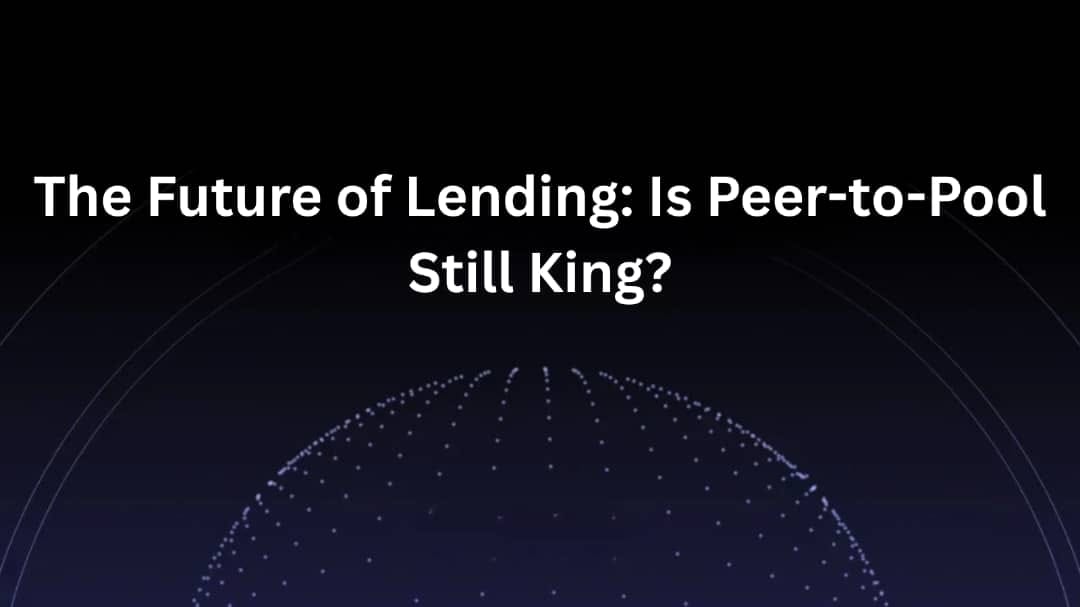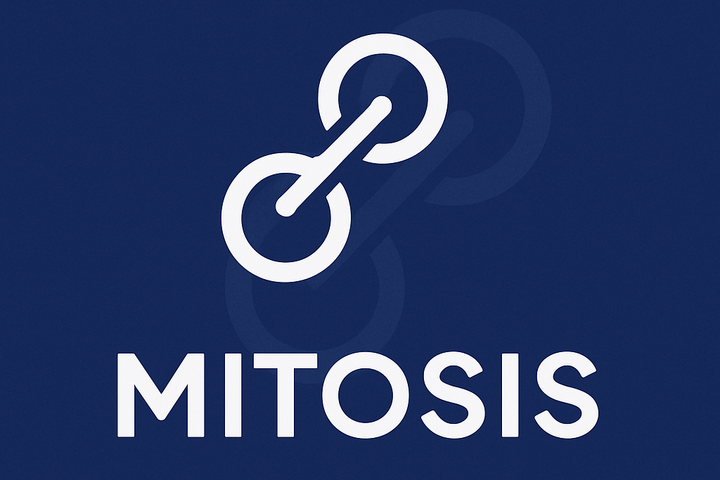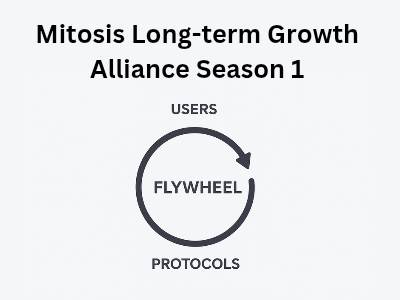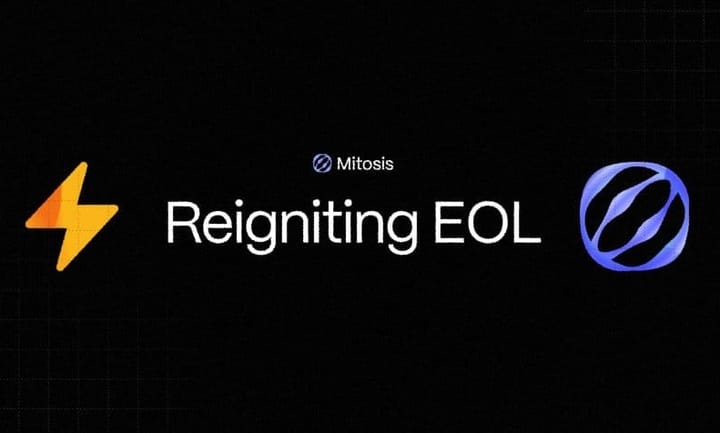The Future of Lending: Is Peer-to-Pool Still King?

The lending landscape is undergoing a seismic shift, driven by technological advancements, changing consumer behaviors, and the evolving regulatory environment. As we navigate this transformation, two primary models have emerged: peer-to-peer (P2P) lending and peer-to-pool lending. This article will explore these models in depth, contrasting their mechanisms, advantages, disadvantages, and their relevance in the evolving capital markets.
1. Understanding Peer-to-Peer Lending
1.1 Definition and Mechanism
Peer-to-peer lending, often abbreviated as P2P lending, is a method of borrowing and lending money directly between individuals without the involvement of traditional financial institutions. This model leverages online platforms to connect borrowers and lenders, facilitating transactions that are typically faster and more efficient than traditional banking processes.
1.2 Key Players
Prominent P2P lending platforms include Clearpool and Maple. Clearpool focuses on institutional lending, allowing borrowers to access capital from a pool of lenders while maintaining a decentralized approach. Maple, on the other hand, caters to both institutional and retail investors, providing a platform for lending and borrowing in the cryptocurrency space.
1.3 Advantages of P2P Lending
- Lower Fees: One of the most significant advantages of P2P lending is the reduction in fees. Traditional banks often charge high fees for processing loans, which can be eliminated in a P2P model. This allows borrowers to access funds at lower interest rates while providing lenders with potentially higher returns.
- Greater Transparency: P2P platforms typically operate on a blockchain or similar technology, which enhances transparency. All transactions are recorded on a public ledger, allowing users to verify the legitimacy of the platform and the transactions taking place.
- Personalized Experience: P2P lending allows for a more personalized lending experience. Borrowers can present their stories and financial situations, enabling lenders to make informed decisions based on individual circumstances rather than relying solely on credit scores.
- Access to Capital for Underserved Markets: P2P lending can provide access to capital for individuals and small businesses that may be overlooked by traditional financial institutions. This inclusivity can foster entrepreneurship and economic growth in underserved communities.
1.4 Disadvantages of P2P Lending
- Lower Liquidity: One of the primary challenges of P2P lending is liquidity. Individual loan requests can take time to fulfill, leading to potential delays in accessing funds. This can be particularly problematic for borrowers who need immediate capital.
- Market Complexity: The need for borrowers and lenders to match their requirements can complicate the process. If there are not enough lenders willing to fund a particular loan, the borrower may struggle to secure the necessary capital.
- Risk of Default: While P2P platforms often conduct credit assessments, the risk of borrower default remains. Lenders may face significant losses if borrowers fail to repay their loans, particularly in economic downturns.
- Regulatory Challenges: P2P lending operates in a complex regulatory environment. As governments around the world adapt to the rise of fintech, P2P platforms may face increased scrutiny and regulatory hurdles that could impact their operations.
2. Exploring Peer-to-Pool Lending
2.1 Definition and Mechanism
Peer-to-pool lending, in contrast to P2P lending, aggregates funds from multiple lenders into a single pool. This pool is then made available to borrowers, allowing for more efficient capital allocation and risk diversification. Peer-to-pool models often utilize smart contracts to automate transactions and manage the lending process.
2.2 Key Players
Prominent examples of peer-to-pool lending platforms include Aave and Compound. Aave is a decentralized lending protocol that allows users to lend and borrow a variety of cryptocurrencies. Compound, on the other hand, is a decentralized finance (DeFi) protocol that enables users to earn interest on their crypto holdings by lending them out.
2.3 Advantages of Peer-to-Pool Lending
- Higher Liquidity: One of the most significant advantages of peer-to-pool lending is the higher liquidity it offers. By pooling funds from multiple lenders, borrowers can access capital more quickly and efficiently. This is particularly beneficial for borrowers who require immediate funding.
- Risk Diversification: Peer-to-pool models allow for better risk management. By spreading investments across a larger pool of assets, lenders can mitigate the impact of individual borrower defaults. This diversification can lead to more stable returns for lenders.
- Automated Processes: The use of smart contracts in peer-to-pool lending automates many aspects of the lending process. This reduces the need for manual intervention, streamlining operations and enhancing efficiency.
- Flexibility: Borrowers in peer-to-pool models often have more flexibility in terms of loan terms and collateral requirements. This adaptability can make it easier for borrowers to secure the funding they need.
2.4 Disadvantages of Peer-to-Pool Lending
- Lower Returns: While peer-to-pool lending offers higher returns on average due to risk diversification and liquidity, the interest rates offered to lenders might be lower than those in P2P lending where riskier, but higher-yielding loans are prevalent. This may make peer-to-pool lending less attractive for investors seeking maximum returns.
- Limited Personalization: Lending pools often lack the personalized element inherent in P2P lending. Since lenders contribute to a collective pool rather than individual loans, the unique preferences or risk assessments of individual lenders are somewhat obscured.
3. Comparative Analysis: Peer-to-Peer vs. Peer-to-Pool Lending
1. Scalability and Market Fit
Peer-to-pool lending models scale more efficiently because capital is aggregated and managed collectively, enabling rapid deployment to borrowers. The architecture is conducive to large-scale liquidity provision and automated management. Conversely, P2P lending, reliant on individual matching between borrowers and lenders, faces scalability challenges, especially under high demand or complex loan requirements.
2. Liquidity and Capital Efficiency
Peer-to-pool lending excels in liquidity, with lenders able to withdraw or add funds relatively freely from or to the pool, and borrowers benefiting from instant or near-instant access to capital. P2P lending can suffer from illiquidity as lenders may be locked into individual loans until maturity, limiting flexibility.
3. Risk Management and Transparency
P2P lending allows lenders to conduct detailed due diligence on each borrower, which can be an advantage in assessing credit risk. This personal vetting can lead to potentially higher returns but increases the risk of bias and inconsistency in risk assessments. Peer-to-pool lending relies on algorithmic risk management and diversification, spreading risk across many borrowers to reduce exposure.
Transparency is enhanced in both models through blockchain technology and public ledgers, though some peer-to-pool protocols emphasize open governance and clear protocol rules due to their decentralized nature.
4. User Experience and Community Aspect
P2P lending offers a more engaging, community-driven experience where lenders feel connected to their borrowers. This social lending aspect can foster loyalty and trust. Peer-to-pool lending, being more automated and pooled, provides a streamlined and simplified user experience but lacks the interpersonal connection.
5. Regulatory Environment
Both models face regulatory uncertainty, varying by jurisdiction. P2P platforms must grapple with regulations pertinent to direct lending and consumer protection. Peer-to-pool models, especially in DeFi, navigate evolving frameworks around digital assets, securities laws, and anti-money laundering (AML) requirements.
4. The Role of Technology in Shaping Lending Models
1. The Impact of Blockchain and Smart Contracts
Blockchain technology provides an immutable, transparent ledger for all transactions, reducing fraud and increasing user trust. It forms the backbone of many P2P and peer-to-pool lending platforms.
Smart contracts automate loan issuance, repayments, and enforcement of terms without intermediaries, significantly reducing operational costs and delays. Their deployment elevates peer-to-pool lending's efficiency and scalability, although they must be rigorously audited to avoid security vulnerabilities.
2. Data Analytics and Artificial Intelligence (AI)
Advanced data analytics and AI are being integrated to improve borrower credit modeling in both lending models. These tools enhance risk assessment accuracy and automate decisions, improving platform reliability and lender confidence.
3. Integration with Traditional Finance
Increasingly, both P2P and peer-to-pool lending platforms are exploring interoperability with traditional financial systems. Hybrid models facilitate fiat on-ramps and off-ramps and comply with legacy regulations, broadening user adoption.
5. The Future Outlook: Is Peer-to-Pool Still King?
5.1 Market Trends and User Preferences
The peer-to-pool model's advantages in liquidity and scalability position it well as the dominant form in capital markets, especially within the decentralized finance (DeFi) sector. Platforms like Aave and Compound exemplify this trend with billions of dollars in total value locked (TVL) and growing user bases.
However, P2P lending retains importance for niche markets requiring personalization or underserved demographics seeking borrower-specific relationships. Platforms such as Clearpool and Maple continue innovating by offering institutional-grade credit underwriting combined with P2P features, which could drive hybrid models.
5.2 Regulatory and Economic Influences
The trajectory of both models will significantly depend on evolving regulatory frameworks. Peer-to-pool platforms may face increased scrutiny as DeFi grows, potentially leading to tighter controls. Conversely, P2P lending’s direct borrower-lender transparency may align better with consumer protection regulations.
Economic cycles also influence lender risk appetite. During downturns, peer-to-pool’s diversified risk may be preferred, but in healthy markets, higher returns in P2P may attract more investors.
5.3 Innovation and Hybridization
Innovation blurs the lines between P2P and peer-to-pool models. Hybrid platforms are emerging, combining the liquidity and automation of peer-to-pool with the direct borrower-lender engagement of P2P. This fusion could present the best of both worlds: scalability, efficiency, personalization, and risk management.
5.4 The Rise of Permissioned Pools and Institutional Lending
Another emerging trend is permissioned lending pools served predominantly by institutional lenders. These pools combine the centralized credit assessment rigor with decentralized liquidity provisions, offering a middle ground for conservative investors skeptical of fully open protocols.
6. Case Studies and Platform Insights
1. Clearpool
Clearpool operates as a permissionless decentralized institutional lending protocol, enabling direct negotiations between institutions and lenders. It blends P2P flexibility with on-chain transparency, targeting markets needing bespoke credit terms, such as venture lending. Its approach underlines the potential of niche-focused P2P lending within decentralized ecosystems.
2. Maple Finance
Maple Finance provides undercollateralized loans to crypto-native companies by curating pools of lenders led by pool operators who conduct due diligence. This hybridizes P2P credit assessment with peer-to-pool capital aggregation, striking a balance that expands lending options beyond over-collateralized loans dominant in DeFi.
3. Aave
Aave is a prototypical peer-to-pool platform with vast liquidity pools, supporting a wide range of crypto assets and flexible borrowing/lending terms. Its innovation in flash loans and collateral swapping illustrates peer-to-pool’s adaptability and technological edge.
4. Compound
As one of the foundational DeFi protocols, Compound pioneered interest rate markets driven by supply and demand, with automatic interest accruals. It embodies peer-to-pool scalability and user-friendly capital access while maintaining a decentralized governance model.
7. Challenges Ahead
1. Risk Management
Both models face credit, liquidity, and operational risks. P2P lending’s concentration risk and the peer-to-pool model’s systemic smart contract risk require ongoing advancements in underwriting and insurance protocols.
2. User Education and Adoption
Broad adoption depends on educating potential users regarding the benefits and risks of each model. The complex technological landscape can deter less sophisticated investors and borrowers.
3. Interoperability and Standardization
The fragmentation across platforms and blockchains hampers liquidity aggregation and user experience. Cross-chain compatibility and standardized protocols could improve market efficiency.
Conclusion
The future of lending is dynamic and multifaceted. Peer-to-pool lending currently holds a dominant position thanks to its liquidity, scalability, and automation, especially in DeFi markets. However, P2P lending remains relevant for its personalized approach, direct relationships, and niche market empowerment.
As technology advances, regulations mature, and market demands shift, the distinction between peer-to-peer and peer-to-pool lending will likely diminish, with hybrid models combining their strengths. The ultimate “king” of lending may be a versatile, innovative system that adapts to borrower and lender needs, harnesses technology for efficiency and security, and operates within a balanced regulatory framework.
Further Reading and Resources
- An Analysis of The Future of Peer-to-Peer Lending – A comprehensive academic paper analyzing P2P lending’s landscape, benefits, and risks.
- Advantages and Disadvantages of Peer-to-Peer vs. Pooled Lending – An insightful article comparing both lending models with practical use cases.
- Aave: The Open Source and Non-Custodial Liquidity Protocol
- Compound Finance Documentation
- Clearpool Website
- Maple Finance



Comments ()